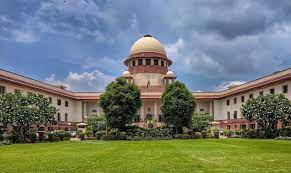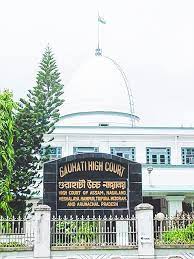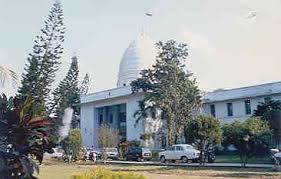Whether the educational institutions in question, viz. (i) the Indian Institute of Technology, Patna (“IIT Patna”, hereafter) and (ii) the National Institute of Technology, Rourkela (“NIT Rourkela”, hereafter), are covered the definition of “governmental authority” in Mega Service Tax Exemption Notification [No. 25/2012, G.S.R 467(E) dated 20th June, 2012] (“Exemption Notification”, hereafter) inter alia exempting various services from the tax network rendered to government, governmental, or local authorities. If “governmental authority” as defined in the Exemption Notification takes within its embrace IIT Patna and NIT Rourkela, they would be eligible for an exemption from the service tax that otherwise applies to construction services provided by service providers or subcontractors within their premises. (Para 1)
In Civil Appeal No. 3991 of 2023 (“CA-I”, hereafter), the appellant assails the judgment and order dated 03rd March, 2016 of the High Court of Judicature at Patna (“Patna High Court”, hereafter) whereby a writ petition[CWJC No. 16965 of 2015] preferred by the first respondent, i.e., M/s Shapoorji Pallonji & Company Pvt Ltd (“SPCL”, hereafter) was allowed and the service tax collected by the appellant was directed to be refunded. (Para 2)
The Exemption Notification, under consideration, was issued by the Department of Revenue under section 93 of the Finance Act, 1994 (“the 1994 Act”, hereafter) inter alia exempting various taxable services from the levy of whole of the service tax under section 66B thereof. Clause 12(c) of the Exemption Notification, which is relevant for the purpose of the present adjudication, reads as follows:
“12. Services provided to the Government, a local authority or a governmental authority by way of construction, erection, commissioning, installation, completion, fitting out, repair, maintenance, renovation, or alteration of –
(a) ***
(b) ***
(c) a structure meant predominantly for use as (i) an educational, (ii) a clinical, or (iii) an art or cultural establishment;
(d) ***
(e) ***
(f) ***” (Para 4)
Since we are concerned with the interpretation of “governmental authority”, clause 2(s) of the Exemption Notification defining “governmental authority” is reproduced hereunder:
“(s) “governmental authority” means a board, or an authority or any other body established with 90% or more participation by way of equity or control by Government and set up by an Act of the Parliament or a State Legislature to carry out any function entrusted to a municipality under article 243W of the Constitution.” (Para 5)
Clause 2(s) of the Exemption Notification underwent an amendment vide a Notification dated 30th January, 2014 (“Clarification Notification”, hereafter). This amendment, re-defining “governmental authority”, sought to broaden the scope of the exemption. The amended definition is set out hereinbelow:
“(s) “governmental authority” means an authority or a board or any other body;
(i) set up by an Act of Parliament or a State Legislature; or
(ii) established by Government,
with 90% or more participation by way of equity or control, to carry out any function entrusted to a municipality under article 243W of the Constitution.” (Para 7)
When the meaning of the provision in question is clear and unambiguous by the usage of “or” in clause 2(s), there remains no force in the submission of Ms. Bagchi that “or” should be interpreted as “and”. In our opinion, the word “or” employed in clause 2(s) manifests the legislative intent of prescribing an alternative. Going by the golden rule of interpretation that words should be read in their ordinary, natural, and grammatical meaning, the word “or” in clause 2(s) clearly appears to us to have been used to reflect the ordinary and normal sense, that is to denote an alternative, giving a choice; and, we cannot assign it a different meaning unless it leads to vagueness or makes clause 2(s) absolutely unworkable. (Para 23)
In the present case, the word “or” between sub-clauses (i) and (ii) indicates the independent and disjunctive nature of sub-clause (i), meaning thereby that “or” used after sub-clause (i) cannot be interpreted as “and” so as to tie it with the condition enumerated in the long line of clause 2(s) which is applicable only to sub-clause (ii). (Para 24)
In the present case, the use of a semicolon is not a trivial matter but a deliberate inclusion with a clear intention to differentiate it from sub-clause (ii). Further, it can be observed upon a plain and literal reading of clause 2(s) that while there is a semicolon after sub-clause (i), sub-clause (ii) closes with a comma. This essentially supports the only possible construction that the use of a comma after sub-clause (ii) relates it with the long line provided after that and, by no stretch of imagination, the application of the long line can be extended to sub-clause (i), the scope of which ends with the semicolon. We are, therefore, of the opinion that the long line of clause 2(s) governs only sub-clause (ii) and not sub-clause (i) because of the simple reason that the introduction of semicolon after subclause (i), followed by the word “or”, has established it as an independent category, thereby making it distinct from sub-clause (ii). If the author wanted both these parts to be read together, there is no plausible reason as to why it did not use the word “and” and without the punctuation semicolon. While the Clarification Notification introduced an amended version of clause 2(s), the whole canvas was open for the author to define “governmental authority” whichever way it wished; however, “governmental authority” was re-defined with a purpose to make the clause workable in contra-distinction to the earlier definition. Therefore, we cannot overstep and interpret “or” as “and” so as to allow the alternative outlined in clause 2(s) to vanish. (Para 27)
Let us consider the problem from a different angle. The revised definition of “governmental authority” and the few punctuations in the definition (two semicolons and two commas) and the conjunction ‘or’ have been noticed above. Literally read, the conjunction ‘or’ between sub-clauses (i) and (ii) clearly divides the two clauses in two parts with the first part completely independent of the second part. The first part is by itself complete and capable of operating independently. A construction leading to an anomalous result has to be avoided and to so avoid, it has to be held that the long line of clause 2(s) starting with “with 90%” and ending with “Constitution” qualifies sub-clause (ii); and, if the conjunction ‘or’ is to be read as ‘and’, meaning thereby that the portion “with 90% … Constitution” has to be read as qualifying both sub-clauses (i) and (ii), then the intention of re-defining “governmental authority” would certainly be defeated. As discussed earlier, the purpose for which “governmental authority” was re-defined must have been to make it workable. (Para 28)
SUPREME COURT OF INDIA
2023 STPL(Web) 339 SC
Commissioner, Customs Central Excise And Service Tax, Patna Vs.
M/S Shapoorji Pallonji And Company Pvt. Ltd. & Ors.
Civil Appeal No. 3991 of 2023 with Civil Appeal No. 3992 of 2023-Decided on 13-10-2023
https://stpllaw.in/wp-content/uploads/2023/10/2023-STPLWeb-339-SC.pdf







